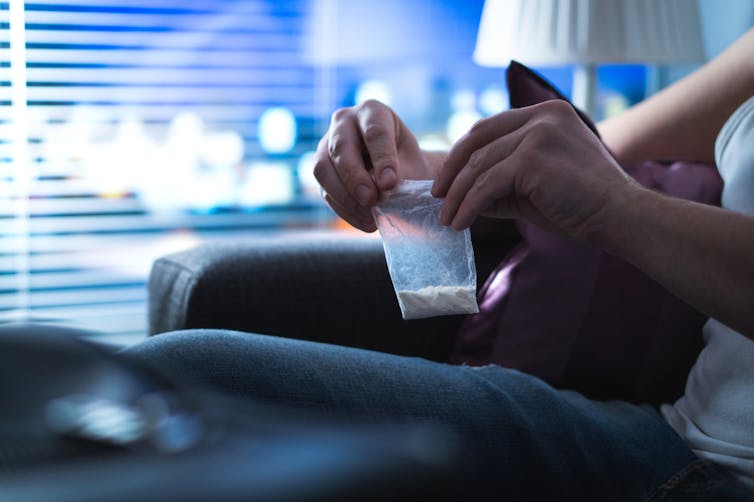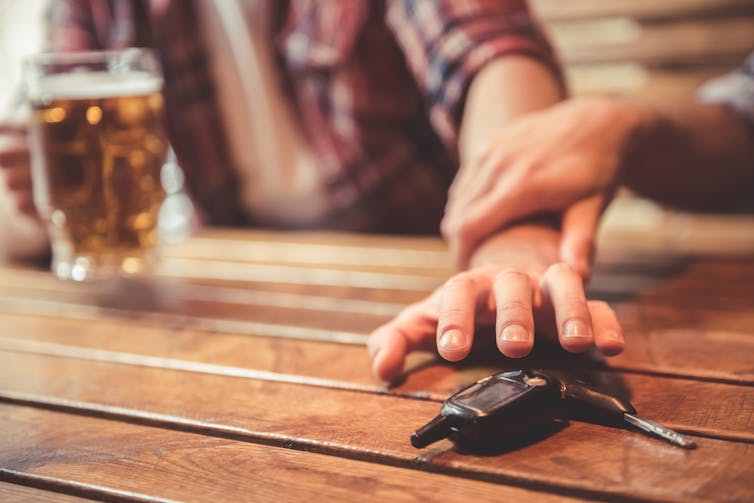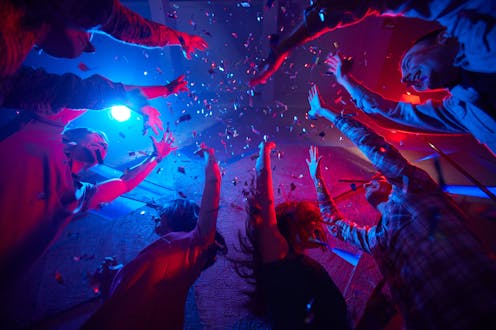Source: The Conversation (Au and NZ) – By Nicole Lee, Professor at the National Drug Research Institute (Melbourne), Curtin University
Cancelled dance parties, festivals and other events have shaped how Australians use alcohol and other drugs during the pandemic.
Now restrictions are easing, some people who have not used alcohol or other drugs recently may start to use them again, and need to be aware of their reduced tolerance.
Here’s what survey data released today by the National Drug and Alcohol Research Centre, tell us about drug use and drug markets during the pandemic.
And here’s what to think about if your drug use during the pandemic has changed, and you’re about to head off to a party.
Cocaine up, ecstasy down, alcohol stable
Of the two yearly surveys released today, one relates to people who inject drugs such as heroin. The other relates to people who use ecstasy and other party drugs, who typically use drugs occasionally.
The group using ecstasy and other party drugs showed significant changes in drug use between 2020 and 2021. This variability is probably because this group tends to use in specific contexts and is more strongly influenced by access and opportunity.
More people used cocaine in 2021 than in 2020, continuing the upward trend in recent years. We don’t know why cocaine use has been increasing. But the frequency of cocaine use was very low at just a few days in the past six months.
Cocaine purity in Australia tends to be fairly low and has been decreasing. So, although other data also show that cocaine has increased in popularity in the past few years, we haven’t seen a big increase in harms.
Read more:
Weekly Dose: cocaine, the glamour drug of the ’70s, is making a comeback
Fewer people used ecstasy in 2021; the frequency of use also decreased (from 12 days in the past six months in 2020 to seven days in 2021).
But this was not just because of closed venues or cancelled events. People surveyed said it was also harder to get. The closed international border has restricted importation of ecstasy and the chemicals used to make it. In the past year, ecstasy purity has reportedly decreased and the price increased.
More people said they used “magic mushrooms”, ketamine, and non-prescribed pharmaceutical stimulants such as dexamphetamine and methylphenidate. The frequency of use of these drugs was very low at just a few days in the past six months.
Read more:
Weekly Dose: anaesthetic and recreational drug ketamine could be used to treat depression
The rate of alcohol use was stable. This is in line with other data showing that, although alcohol use may have increased slightly in the early months of the pandemic, it stabilised after that. Spending on takeaway alcohol at bottle shops increased, but the opportunities to drink at pubs, bars and restaurants decreased.
The surveys are not intended to represent all people who use drugs, so should be interpreted alongside other sources.
What might happen as restrictions ease?
As festivals and dance parties start up again, some people may start to use these drugs again.
When you use a drug, including alcohol, regularly, your body gets used to having it in your system and you need to use more to get the same effect. This is known as “tolerance”.
If you haven’t used a drug for a while, your tolerance may have decreased. You’ll need less to get the same effect. So if you start using the same amount as before you might unintentionally use too much and experience unwanted side effects, including overdose.

Shutterstock
If you have increased use during the pandemic, your tolerance may have increased, so the effects at your usual dose may be reduced. This can also lead to unintentional overdose because, although you don’t feel the effects, the drug may still be toxic at high enough doses.
The setting you use a drug in also changes the effects you might feel. So if you have been using ecstasy quietly at home during the pandemic you’ll have different effects to using it while dancing all night.
Read more:
How does MDMA kill?
What can you do to use more safely?
With changes in the market, the strength and purity of illicit drugs you used before the pandemic might also be different to those you have access to now.
If you can have your drugs checked to see what’s in them you can decide whether to still take them or not. The ACT government has announced funding for a trial of a drug checking service. New Zealand passed interim legislation to make drug checking legal last year. It’s due to finalise the full legislation at the end of this year to make it permanent.
If you don’t have access to a drug checking service, you should be extra cautious the first few times you use a drug again after a break:
-
“crush/dab/wait”: take a quarter of a pill or a dab of powder at first then wait an hour or two to see the effects. You can always take more if wanted, but you can’t get it out of your system if you take too much
-
avoid mixing drugs: the more drugs you take at the same time the more likely you are to have problems, like overdose. Some drugs reduce your ability to feel the effects of other drugs. For example stimulants can mask the effects of alcohol, then you can drink too much
-
check what’s circulating: the New South Wales and Victorian governments regularly release alerts to the public about contaminants found in seized drugs. Other states also sometimes release alerts.
Tolerance also applies to legal drugs like alcohol. If you’ve been drinking more during lockdown, your tolerance might have increased and you might drink more than you intended. You might not feel drunk, but your brain function may still be affected and you can still be over the legal limit for driving.

Shutterstock
If you have been drinking less, your tolerance may have decreased so a smaller amount of alcohol will affect you more than normal. So, if you drink the same amount as you did before the pandemic you might get drunk more quickly.
Start slowly, monitor the number of drinks you have and pay attention to how drunk you are feeling.
Read more:
Getting back on the beers after lockdown? Here’s what you should know
How to get help
If you’re worried about your own or someone else’s use of alcohol or other drugs call the National Alcohol and other Drug Hotline on 1800 250 015, free from anywhere in Australia.
If you want support to manage your drinking, Hello Sunday Morning offers a free online support community where you can connect and chat with others who are actively changing their alcohol use.
You can also chat online with a counsellor at Alcohol & Drug Counselling Online, join an online support group at SMART Recovery or talk to your GP about seeing a psychologist. You may be able to access support via telehealth.
![]()
Nicole Lee works as a consultant in the alcohol and other drug sector and a psychologist in private practice. She has previously been awarded funding by Australian and state governments, NHMRC and other bodies for evaluation and research into drug prevention and treatment. She is a member of the Australian National Advisory Council on Alcohol and other Drugs and the board of directors of Hello Sunday Morning and The Loop Australia.
– ref. Forgotten how to party? Safety tips from a drug and alcohol expert – https://theconversation.com/forgotten-how-to-party-safety-tips-from-a-drug-and-alcohol-expert-170007








